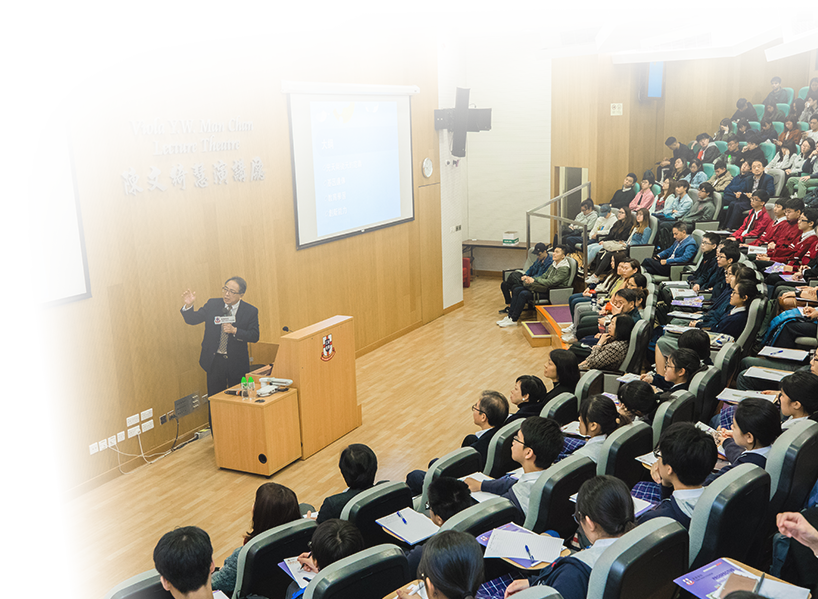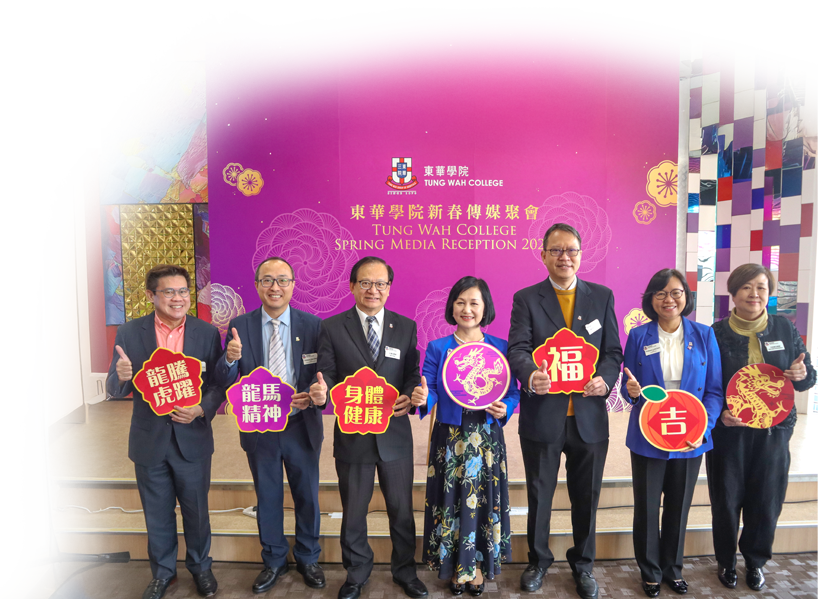About TWC

Admission

Programmes
-
Bachelor’s Degree Programmes
-
Sub Degree ProgrammesDiploma ProgrammeCertificate Programme
-
Mainland Admission

 Administration Units
Administration Units
 News & Events
News & EventsFAQ & Other Information
Frequently Asked QuestionsQ1What are the special features of the Medical Imaging Programme at Tung Wah College (TWC)?A1The Programme is the first local self-financing degree programme with direct entry to Medical Imaging in the first year of the Programme.The Programme adopts Education 4.0 approach, using advanced technology, to transform the future of radiographer education. The Programme will use artificial intelligence, big data, simulation and virtual environments as tools to deliver student-centred teaching. The Programme adopts competence based clinical education/assessment with an emphasis on training radiography practitioners to engage in with reflective and reflexive practice central to patient-centred care and the competent use of various imaging technologies to screen, diagnose, and treat diseases. TWC has close affiliations and collaborations with Tung Wah Group Hospitals (TWGHs)’ network, the Hospital Authority and private healthcare sectors for students’ clinical practicum, and the appointment of clinical experts for academic exchange and teaching.The Programme will provide enhanced training in Computed Tomography which has been increasingly used as the first line of imaging method for diagnosis and Breast Imaging for cancers screening and follow-up.The Programme will train students to become qualified professionals on performing medical imaging techniques including X-ray, Magnetic Resonance Imaging, Computed Tomography, Breast Imaging etc.There has been an ongoing shortage of Diagnostic Radiographers in Hong Kong. The recent years’ outflow rate ranges from 8-20% and the impact on the medical imaging services is particularly serious as the number of Diagnostic Radiographers has always been small as compared with other healthcare disciplines. Facing the shortage of radiography professional workforce, TWC aims to train related professionals to meet with the ongoing needs of the society.Q2How is studying Medical Imaging at TWC compared to studying the same programme at other universities?A2TWC is a self-financing tertiary institution. The academic staff of this programme are well experienced in medical imaging education as well as clinical practice. The BSc(Hons) in Medical Imaging degree programme at the TWC will have equivalent academic merits as other similar degrees from other universities in Hong Kong and around the world. Unlike other local medical imaging programme which has medical imaging-specific courses from the latter half of the second year, TWC’s medical imaging programme delivers medical imaging-specific courses right from the beginning. Such arrangement will provide students with more in-depth discipline related learning. The maximum student intake each year for this programme is 30. TWC aims to foster a close caring relationship between the teachers and students with special attention to their professional learning and career growth.Q3Can applicants with post-secondary qualifications apply to the Programme?A3Applicants who may have already completed post-secondary education such as bachelor’s or associate degree, especially in health-related fields are welcome to apply.Q4Is there any practicum for this Programme? If yes, how and when will the practicum be arranged?A4The Programme is prescribed with a 36-week (1440 hours) clinical practicum covering the full spectrum of medical imaging practice. The practicum spans across year 2 to year 4 of the Programme, which takes place in various hospitals under Hospital Authority, private hospitals and private sectors offering medical imaging services. Overseas clinical exchange will be actively explored.Q5What are the differences between Medical Imaging and Radiation Therapy?A5Medical Imaging is integral to the practice of Medicine. Diagnostic radiographers are Medical Imaging practitioners who incorporate the use of different imaging technologies for diagnosis, screening, and treatment of diseases in patient-centred care.Radiation Therapy, or Radiotherapy, is a type of cancer treatment in which therapists kill cancerous cells in the body by exposing them to ionising radiation, such as X-rays, gamma rays, high-energy electrons, heavy particles or radioisotopes. Radiation therapists incorporate the delivery of radiotherapy planning and treatment in patient-centred care. Medical Imaging is utilized as a guiding tool in Radiotherapy.Q6Is this Medical Imaging Programme recognized by the professional registration board in Hong Kong?A6TWC is currently seeking professional accreditation of the Programme from the Radiographers Board of the Supplementary Medical Professions Council for the purpose of professional registration. TWC anticipates that professional registration will be granted before graduation of the first cohort of students.Q7What is the career prospect for this Programme?A7On obtaining the programme accreditation from the Radiographers Board, graduates can practise as diagnostic radiographer in Hospital Authority’s hospitals, private hospitals, or medical imaging centres in Hong Kong.The Programme’s enriched curriculum enables graduates to further study in local and overseas masters’ programmes in Medical Imaging and Radiation Sciences, Medical Physics and Healthcare Management.The Hong Kong’s professional qualification is recognized by a number of countries such as Britain, Canada, Singapore, and Australia.Q8Is Medical Imaging a high radiation work and how much radiation will a Diagnostic Radiographer receive comparing to the general population?A8The answer may be “yes” 50 years ago, but certainly “no” today. Radiation protection to patients and radiation workers has improved tremendously over the years and technology advancement has greatly reduced the radiation exposure needed for any examination. Also, radiation received is closely monitored by devices worn by radiation workers. Pregnant staff will be allocated to duties which receives no radiation.Up-to-date, radiation level received by nearly all Diagnostic Radiographers has actually become the same as that of the general population.
PROGRAMMES+ Bachelor’s Degree Programmes- Bachelor of Education (Honours) in Early Childhood Education
- Bachelor of Health Information and Services Management (Honours)
- Bachelor of Health Science (Honours) in Nursing
- Bachelor of Management (Honours) in Social and Business Sustainability
- Bachelor of Science (Honours) in Applied Gerontology
- Bachelor of Science (Honours) in Biomedical Science
- Bachelor of Science (Honours) in Forensic Biomedical Science
- Bachelor of Science (Honours) in Medical Imaging
- Bachelor of Science (Honours) in Medical Laboratory Science
- Bachelor of Science (Honours) in Occupational Therapy
- Bachelor of Science (Honours) in Physiotherapy
- Bachelor of Science (Honours) in Radiation Therapy
- Bachelor of Social Science (Honours) in Applied Psychology
-














